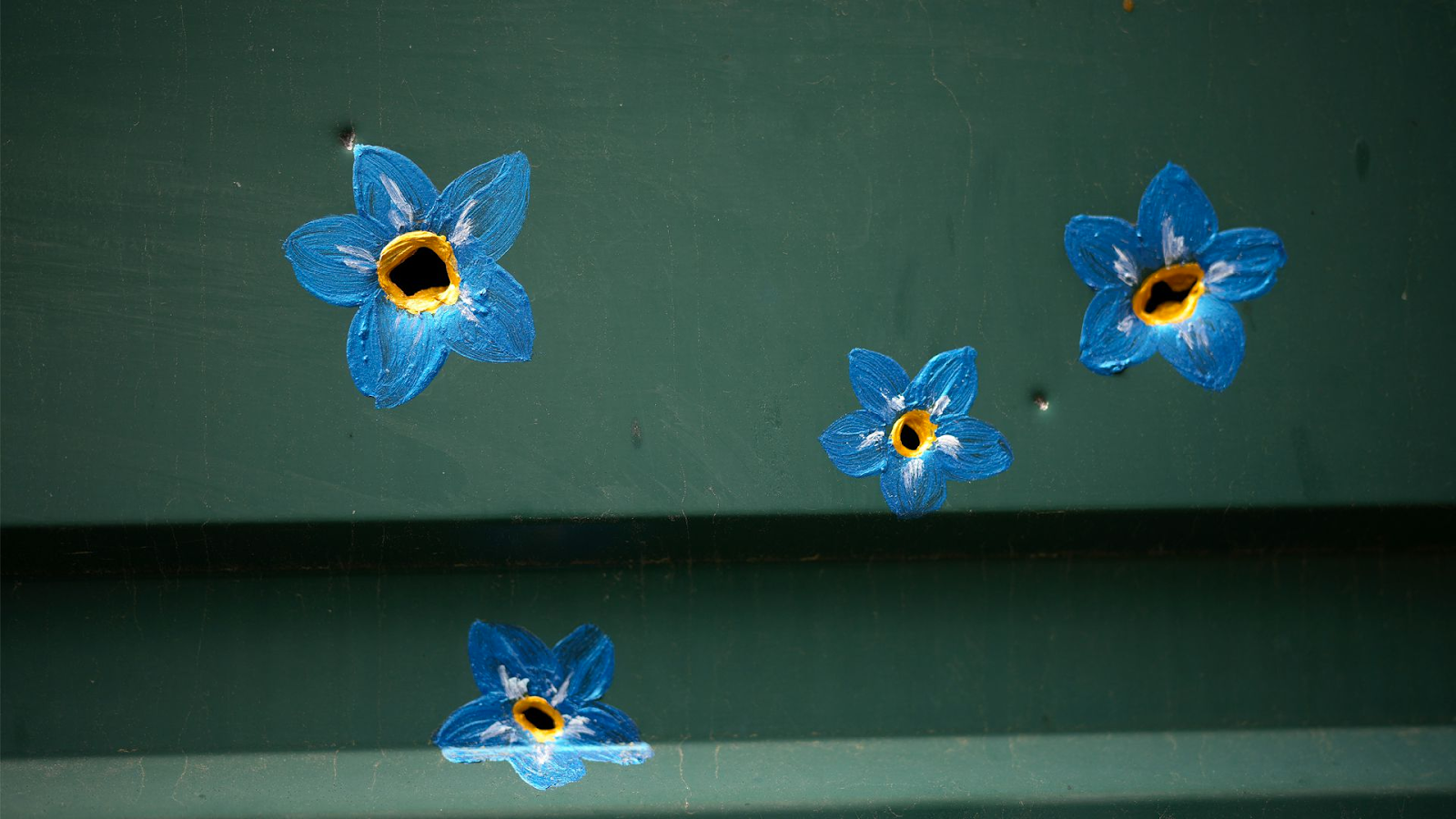Detail: Shellcase vase
Many years ago I drew them and I have found two images of the drawings on an old hard disk file. Both images though for some reason cropped. The shell cases were used as flower vases and perhaps I was reminded of them because of a recent visit back to Ukraine by our lodger, who has been staying with us as an escape from the war over there. She came back with some photographs she had taken of bullet holes turned into flowers. Apparently this image is now common in Ukraine, and I was able to find several online such as the one below.
War is a horrible but very human thing, my generation being the first for a while in the UK to avoid having to go and fight. I remember wanting to draw the shell cases because of their transformation from objects of death dealing violence into reminders of the fact that humans can also be creative and can build intense relationships with materials that don't lead to destruction, and instead open out a potential for beauty.
Detail: Shellcase vase
As I was making the drawings I realised that the foliage emerging from the top could also be read as marks made to represent a gun or cannon firing.
After a long search brought upon myself because of my failure to organise files, I eventually found uncropped images of the two drawings. Seeing them again reminded me that at the time I was making drawings about looking, which means that the images read as much about the struggle to claim a relationship with a space, as about the shellcases as objects. At the time, drawing for myself was about trying to find a relationship with the space both objects and myself inhabited. I have a lot of empathy with a past self that struggled to make the white space of the paper into an extension of both mine and the brass shellcase's space. I have had a similar obsession for many years now, each time perhaps approaching it in a different way, but always associated with a puzzlement about how to engage with looking and how to re-create the energy of the experience. The conjunction of flowers and armaments, also reminded me of another image, an image from the time when I was a hippy and we were all convinced of the reality of flower power. Each of us feel the continuing effects of history, but each experience of it is unique.
October 21, 1967: March on the Pentagon by the National Mobilization Committee to End the War in Vietnam. Protester George Harris placing a carnation into the barrel of an M14 rifle held by a soldier of the 503rd Military Police Battalion
Drawings in pencil, wax crayon, watercolour and ink.
Because as a boy I was the only member of the family interested in my great uncle's fate, his diary and other personal effects were passed on to me not long after my grandparents died. He had been shot through his breast pocket, therefore the bullet went through the notebook and diary he had in it. These items had a powerful resonance and still do.
The Human body English / French: Great Uncle Harry's soldier's notebook
It was expected that a soldier was at some point going to need to speak some French and in particular it might well be in a situation whereby some part of his body was in need of treatment. Therefore soldiers were issued with a handy reminder of what to say.
Great uncle Harry's diary indicating the day he went on the Somme.
The bullet that killed him went through the bottom edge of the diary, almost going through an image of an underwater mine, an image I would redraw just over 100 years later for an article 'Revealing the invisible: The virus is looking at you', whereby I looked at how the corona virus had been represented and how it could be read as a type of ‘dark star’ or anti-sun. In the article I used my own very simplified drawing of a mine to show how closely its structure echoed the way the virus was sometimes represented. I was very aware that World War I claimed an estimated 16 million lives, but in comparison the influenza epidemic that swept the world in 1918 killed an estimated 50 million people. The drawing of a mine was my private acknowledgement of how great uncle Harry still shapes some of my thoughts, his memory passed to me by his sister, and now passed on to anyone who cares to read this blog.
See also:
The Blue Danube Reflections on another war and technical drawing











Such a moving reflection on how objects once tied to destruction can carry beauty and memory across generations. Your story brings deep meaning to these relics, and it’s fascinating how art, memory, and materials intertwine so personally this truly shows the spirit behind Vishwakarma Yojana .
ReplyDelete